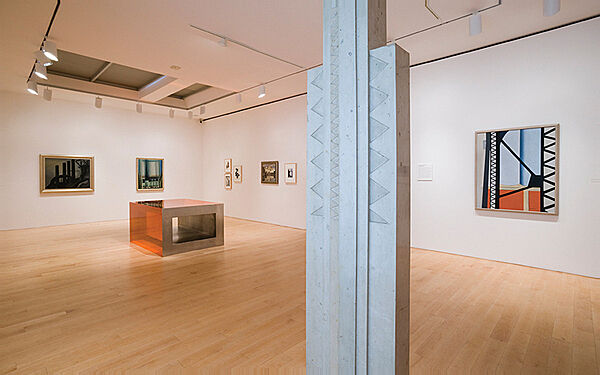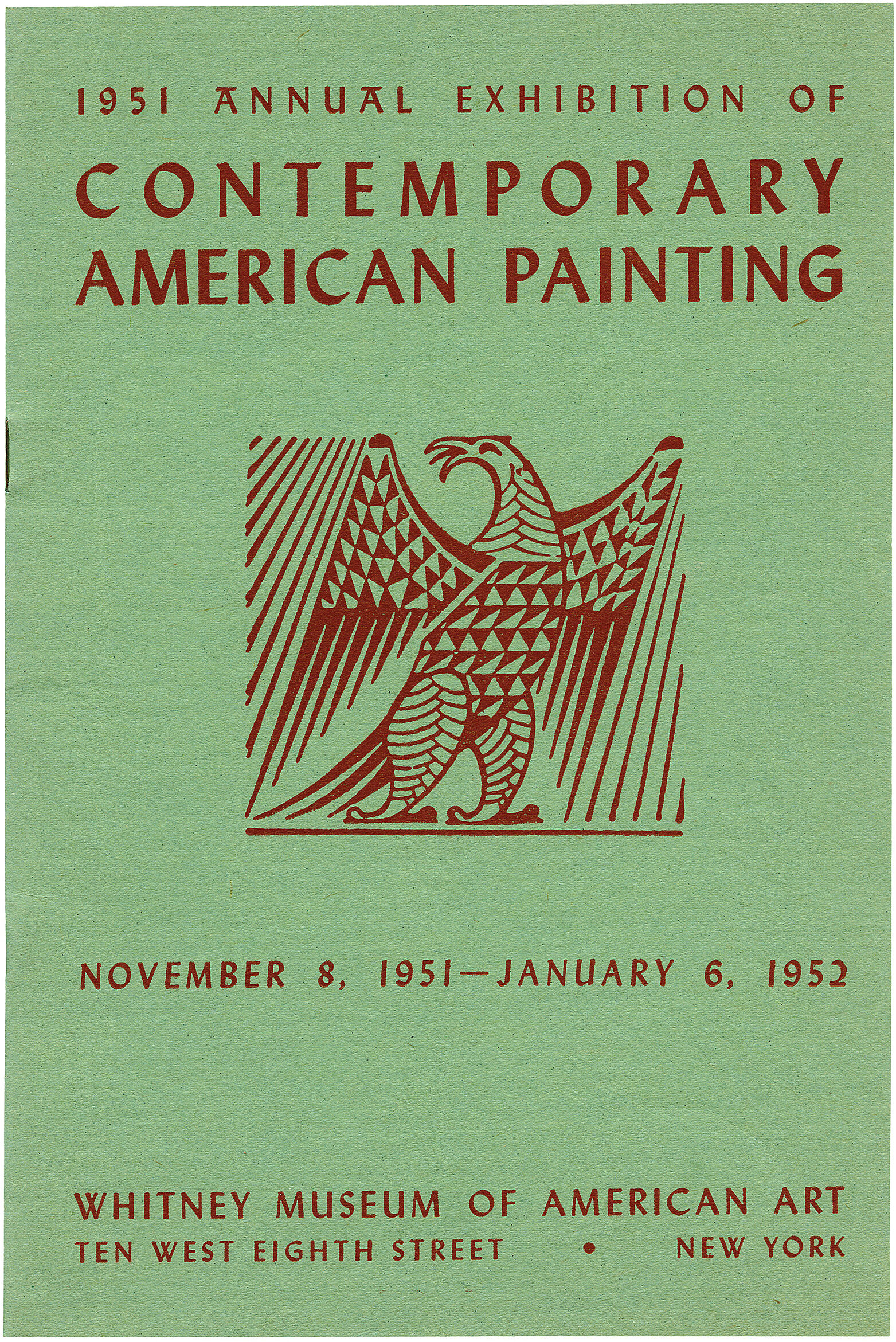Jackson Pollock
1912–1956
Jackson Pollock “broke the ice,” as Willem de Kooning famously declared, clearing the way for an entire generation of abstract artists in the years following World War II. A key figure among the loosely affiliated group referred to as the New York School, he sought a new mode of painting that was both personal and relevant to his time. Pollock had become acquainted with a number of the Surrealists who fled to New York during the war, and their model of psychic automatism, a method that employed spontaneous expression and allowed for manifestations of the unconscious, was particularly important to his artistic progression.
In 1947 Pollock developed the innovative method evinced in Number 27, 1950 and his other “drip” paintings. He tacked unstretched, unprimed canvas onto the floor of his studio. Then he dipped hardened brushes and wooden stir sticks into cans of enamel or aluminum paint and dripped, flung, and poured liquid pigment directly onto the cloth. “On the floor I am more at ease,” Pollock explained. “I feel nearer, more a part of the painting, since this way I can walk around it, work from the four sides and literally be in the painting.” With gestures at once controlled and improvisatory, he laid down skeins of black lines before adding looping cords of pink, silver, yellow, brown, and white to create an allover composition. The dense, overlapping layers seem to vibrate with energy. Pollock’s emphasis on spontaneity and the revelatory quality of his process helped elevate the act of painting to a level of importance equal to that of the finished picture. This shift would have a profound influence upon a multitude of artists in succeeding decades.
Introduction
Paul Jackson Pollock (; January 28, 1912 – August 11, 1956) was an American painter. A major figure in the abstract expressionist movement, he was widely noticed for his "drip technique" of pouring or splashing liquid household paint onto a horizontal surface, enabling him to view and paint his canvases from all angles. It was called all-over painting and action painting, because Pollock covered the entire canvas and used the force of his whole body to paint, often in a frenetic dancing style. This extreme form of abstraction divided critics: some praised the immediacy of the creation, while others derided the random effects.
A reclusive and volatile personality, Pollock struggled with alcoholism for most of his life. In 1945, he married artist Lee Krasner, who became an important influence on his career and on his legacy. Pollock died in August 1956 at age 44 in an alcohol-related single-car collision when he was driving. Four months after his death, Pollock was given a memorial retrospective exhibition at the Museum of Modern Art (MoMA) in New York City. A larger, more comprehensive exhibition of his work was held there in 1967. In 1998 and 1999, Pollock's work was honored with large-scale retrospective exhibitions at MoMA and the Tate Gallery in London.
Wikidata identifier
Q37571
Information from Wikipedia, made available under the Creative Commons Attribution-ShareAlike License . Accessed December 20, 2025.
Introduction
Pollock was one of the leading proponents of Abstract Expression in the 1940s and 1950s. His art, lifestyle, and untimely death have been elevated to the status of legend. In 1928, he studied at the Manual Arts High School in Los Angeles, and during this time was exposed to European modernism, analytical psychology, and Surrealist automatism. In 1930, he settled in New York, and studied with the Regionalist painter Thomas Hart Benton. During the 1930s he lived in poverty and worked as a mural assistant for the Works Progress Administration Federal Art Project. His work before 1938 shows the influence of Benton, Albert Pinkham Ryder, and the Mexican muralists. In 1938, he was hospitalized for alcoholism during which time he used automatic drawing as therapy. From this, Pollock developed his early style, one of totemic male and female figures and images of eyes or mythic beasts that constituted a personal iconography. A fine example of this period is "Guardians of the Secret," a work of late-Surrealist style and frenetic brushwork that would hint at his later mature style. He met the painter Lee Krasner in 1941, and they married in 1945. Pollock is best known for working methods of pouring or dripping paint onto a large canvas on the floor, moving about it as he worked, the entire art process being a kind of performance. Typically moving from left to right as if "writing" the work, Pollock laid the key vertical and horizontal elements down first, mostly black or white, and then intertwined subsequent colors within it. This method of organizing a space into panels echoes Benton's theories of mural composition. Pollock was one of the first celebrity painters of the Post-War era in the USA, his free-form style and dramatic personality capturing the spirit of the Beat Generation of the early 1950s. He was killed in a car accident in 1956. Comment on works: painter
Country of birth
United States
Roles
Artist, engraver, painter
ULAN identifier
500015134
Names
Jackson Pollock, Paul Jackson Pollock, jackson Pollock
Information from the Getty Research Institute's Union List of Artist Names ® (ULAN), made available under the ODC Attribution License. Accessed December 20, 2025.





























